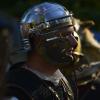Малко еволюционни новини
-
Последна активност
-
- 12 мнения
- 194 прегледa
-
- 37 мнения
- 934 прегледa
-
- 2 мнения
- 87 прегледa
-
- 1787 мнения
- 154919 прегледa
-
- 220 мнения
- 4772 прегледa
-
-
Последно разглеждащи 0 Потребители
- No registered users viewing this page.




Препръчано мнение
Напиши мнение
Може да публикувате сега и да се регистрирате по-късно. Ако вече имате акаунт, влезте от ТУК , за да публикувате.